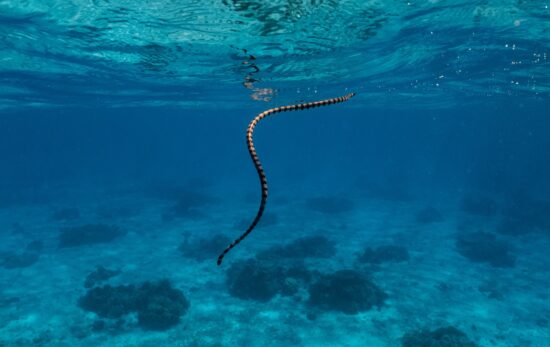There’s no doubt that sharks are some of the most extraordinary animals in the ocean – garnering massive amounts of attention from people around the world. With roughly 450 species of sharks calling the underwater world home, there’s an incredible variety of sharks to admire. But the admiration doesn’t have to stop there, since sharks have approximately 650 ‘cousin’ species that are equally amazing.
All belonging to the scientific class known as Chondrichthyes, sharks and their relatives (chimaeras, skates, and rays) are characterized by their distinct skeletons made of cartilage, rather than bone. With nearly one quarter of Chondrichthyans classified by the IUCN as Threatened with Extinction, divers play an important role in advocating for the protection of sharks and their relatives. That’s why we’re shining a bright spotlight on some of shark’s closest (and coolest) relatives.
Chimaeras
Often called ghost sharks, chimaeras evolved roughly 400 million years ago. With translucent eyes and a venomous spine on their backs, chimaeras are largely confined to the deep sea at depths ranging from 200 – 2,600 meters (650 – 8,500 feet). This unfortunately means that chimaeras are highly vulnerable to deep sea fishing pressures. Amazingly, some lucky divers have on occasion spotted these other-worldly beauties at shallower depths.
While they share many similarities with their shark cousins (cartilage skeleton, electroreception, etc), chimaeras differ in three main ways. Instead of having 5 – 7 gill slits, chimaeras have 4 gills with one external gill covering (more like bony fish). Instead of having lots of sharp and replaceable teeth, chimaeras have 3 pairs of permanent grinding tooth plates. Instead of being covered in tough scales, chimaeras have smooth skin.
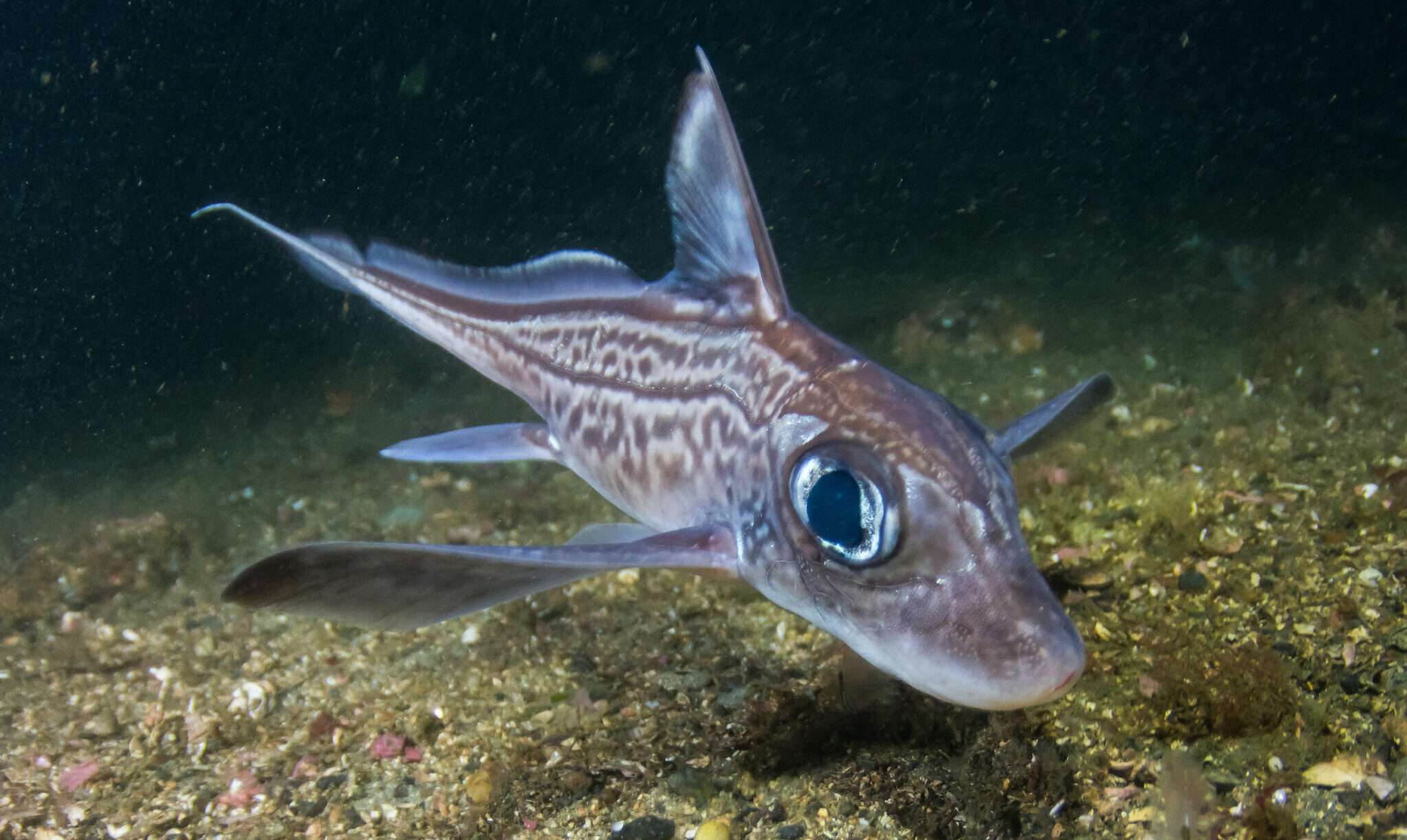
Shovelnose Rays
One group of shark relatives that are particularly jaw-dropping for any diver lucky enough to see them, are the shovelnose rays – including guitarfish and sawfish. With their shark-like bodies and cartilage skeletons, guitarfish and sawfish species were first thought to be sharks. Later, they were thought to be intermediates between sharks and rays. More recent findings from marine scientists have confirmed that this extraordinary group of animals are actually most closely related to rays.
Typically found on sandy seafloors near coastal seagrass beds and rocky reefs, shovelnose rays eat a variety of bottom-dwelling animals like shrimp, crabs, and small fish. With the ability to pump water over their gills (like some of their shark relatives), guitarfish and sawfish species are able to remain motionless on the bottom to stealthily hide from predators and prey. Despite their incredible characteristics, shovelnose ray species are among the most threatened of all sharks and rays, primarily driven by high demand for their fins.
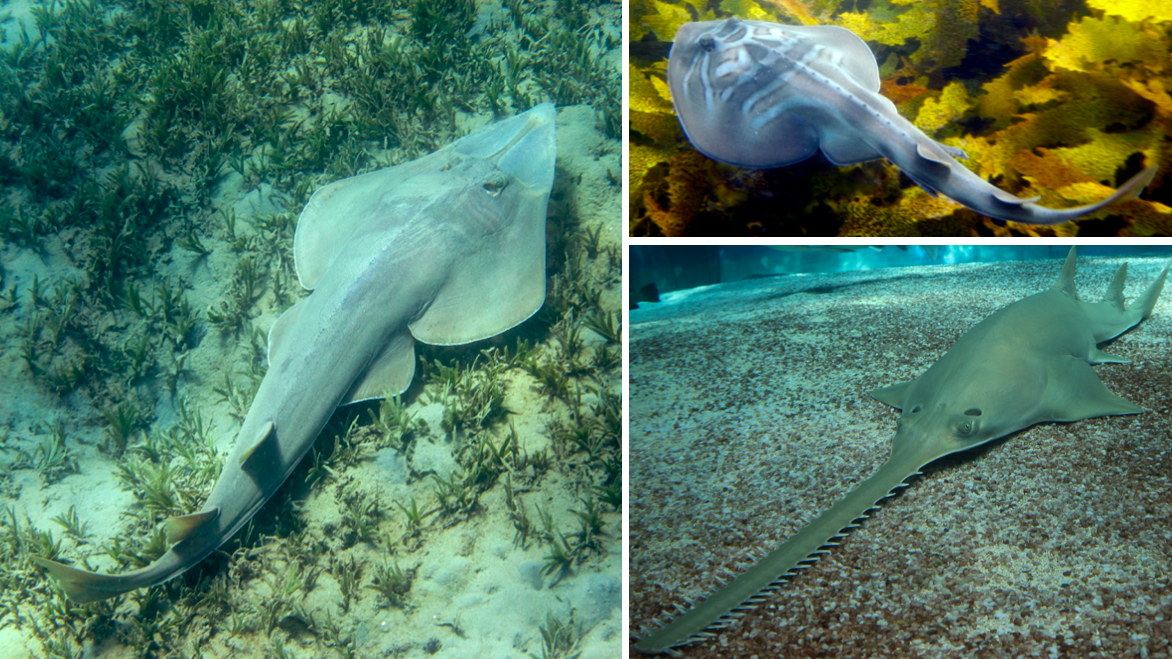
Skates
Commonly mistaken for stingrays, one group of shark relatives that are often overlooked are the skates. Belonging to their own unique family, an amazing variety of skate species live throughout the world’s oceans – from tropical waters all the way to Arctic waters. Skates are also found at an incredible range of depths from extremely shallow waters to nearly 3,000 meters (10,000 feet) below the surface.
Skates typically have shorter, stockier tails than stingrays, with no stinger at all. These bottom-dwelling shark relatives come in a variety of solid colors and patterns, as well as a variety of sizes. The smallest skate species, the starry skate, grows to about 1/2 of a meter (2 feet), while the largest skate species, the common skate, grows to nearly 3 meters (10 feet). Like their many relatives, common skates are unfortunately listed as critically endangered by the IUCN – often caught for their fins or as bycatch in commercial fisheries.
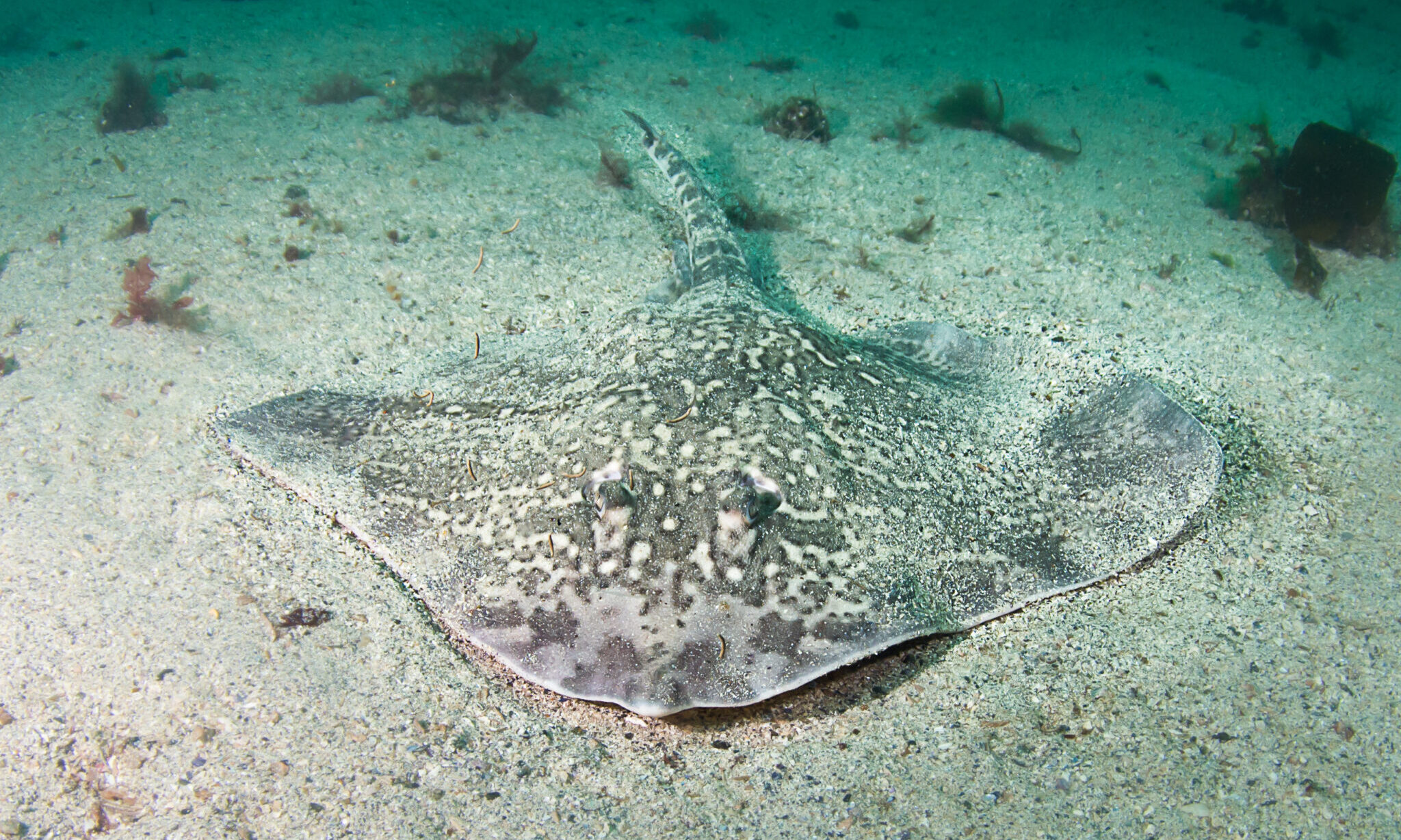
Electric Rays
Named for their ability to produce an astounding electrical shock, nearly 70 different species of electric rays are found worldwide in both warm and temperate waters. Most electric rays bury themselves in the sand during the day and come out to feed on small fish and invertebrates at night – using their two specialized electric organs to shock and stun their prey.
Fortunately, due to the strong electric discharge that each electric ray is capable of generating, these very circular rays are basically not targeted by any commercial fisheries. Divers most definitely do not want to come in contact with an electric ray, as their electric shock is powerful enough to knock down a human adult in an instant. If you’re lucky enough to spot one, as with all ocean animals, observing from a distance is ideal for everyone.
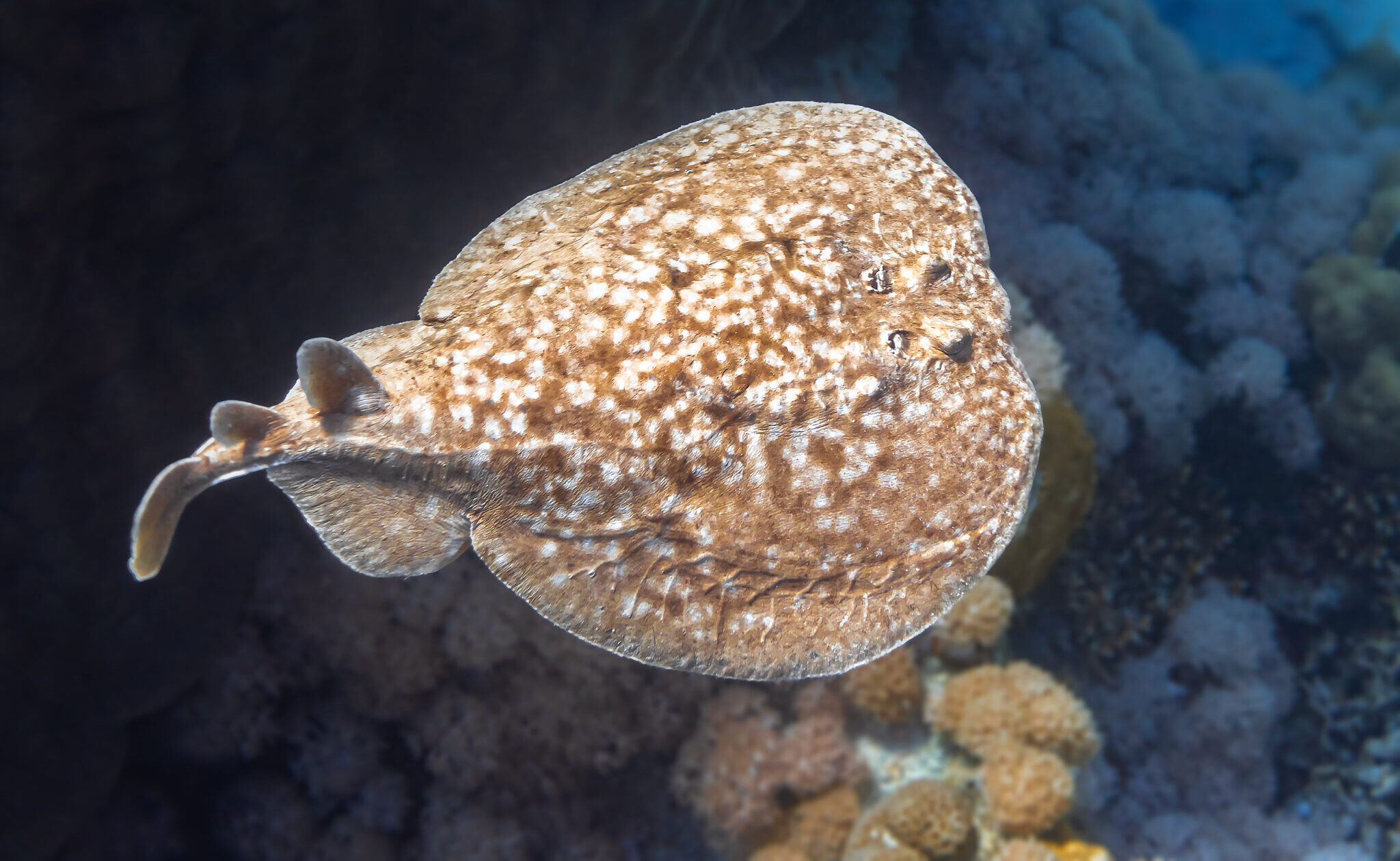
Stingrays
With more than 200 species of remarkable stingrays inhabiting the world’s oceans (as well as some freshwater rivers and lakes) stingrays are surely sharks most commonly known relatives. Stingrays share many characteristics with their shark cousins including cartilaginous skeletons, electroreception, and tough scales covering their bodies. Like sharks, many stingray species are facing extinction since they are often targeted by commercial fisheries and caught as bycatch.
Stingrays get their name from the sharp, often serrated, toxin-filled barb on their tail. If a stingray feels threatened, it can lift its barbed tail upward and injure potential predators. That’s why it’s very important when doing a shore dive that divers do the ‘stingray shuffle’. By carefully shuffling your feet while entering and exiting the water, any stingrays hiding in the sand will move away before you step on them. Uniquely, manta rays are the only members of the stingray family that do not have stingers. Stingrays truly come in all shapes, colors, and sizes – with the largest being the oceanic manta ray which can grow to 7 meters (23 feet) wide.
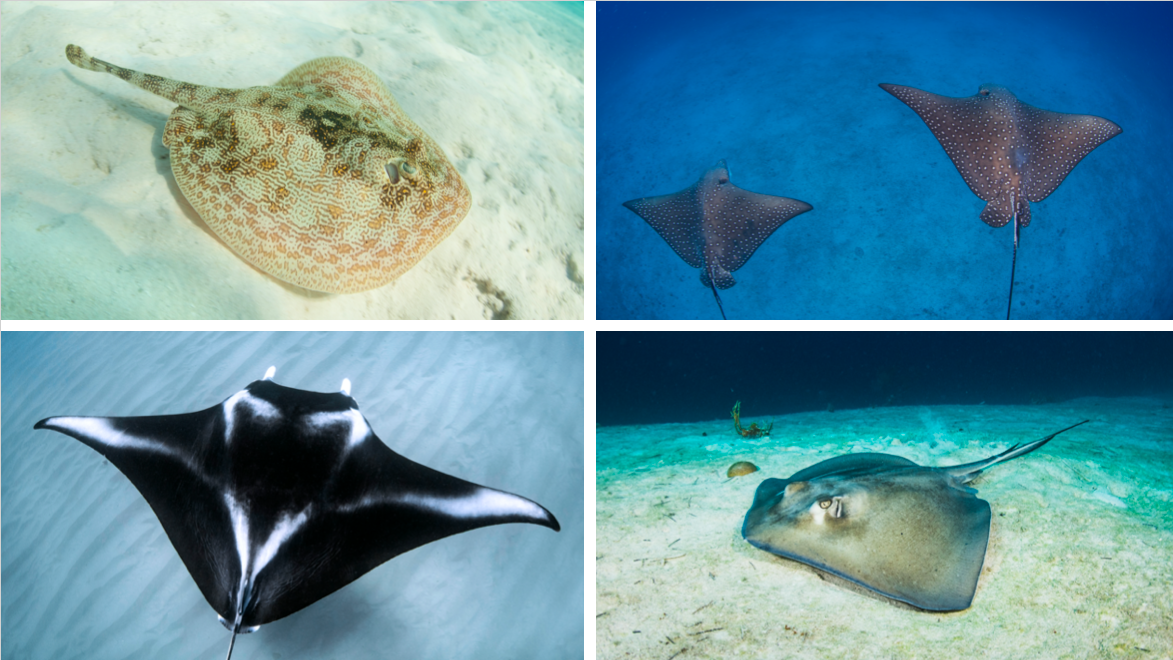
Although sharks are the most popular of the Chondrichthyans, we feel that it’s important to shine a spotlight on the lesser-known (but equally amazing) members of the shark family tree. Especially because one in four shark and ray species is facing an increased threat of extinction.
Divers are some of sharks and ray’s closest and most influential allies. Together, we are creating a powerful collective voice to influence positive change for this incredible group of ocean animals. Here are four ways you can help:
- Enroll in the AWARE Shark Conservation Specialty Course. This diving course explores why sharks (and their closest cousins) are vulnerable, the importance of a healthy shark populations, and how to take action to protect them.
- Be mindful of what ends up on your plate. Some shark and ray advocates choose to remove ocean animals from their plate all together. If you choose to eat seafood, refrain from a purchase unless you can be certain that it’s coming from a sustainable source with low bycatch levels.
- Share your support for sharks and their relatives with others. Whether you start a conversation with a friend or family member, or post about your passion for sharks and rays on social media, every voice counts.
- Sign up to be a Torchbearer. Join our community that cares deeply about healing the planet above and below the surface. PADI Torchbearers inspire others to bring about meaningful change by turning passion into purpose for the ocean.


